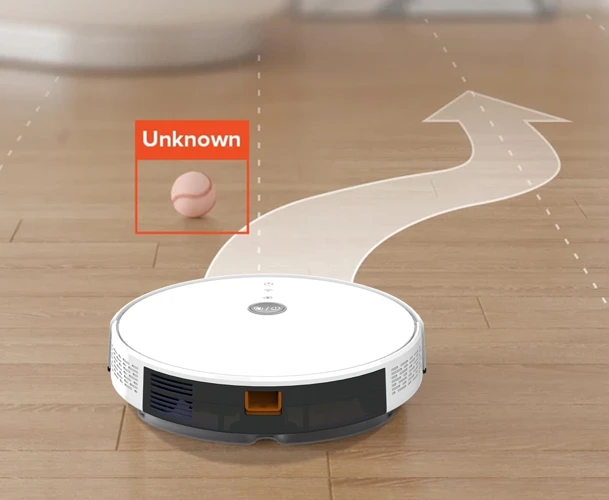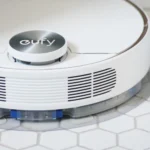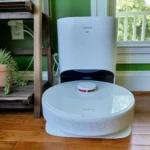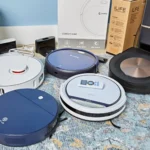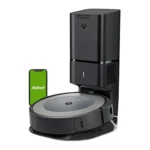Introduction
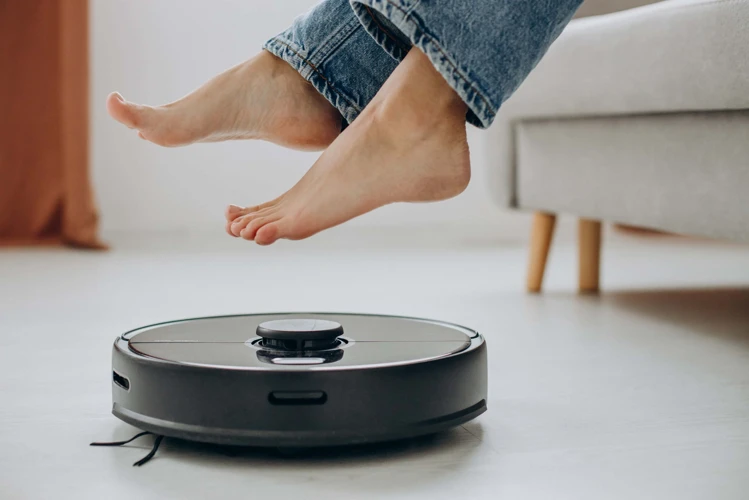
As the pace of modern life accelerates, so too does the demand for smarter and more efficient home appliances. Fortunately, advancements in technology have led to the invention of smart vacuum cleaners with advanced navigation systems. These intelligent machines offer a range of benefits and convenience features that are unrivaled by their traditional counterparts. In this article, we explore the benefits of these smart vacuum cleaners and how they can enhance your cleaning experience while saving you time and energy. Read on to discover more about the future of home cleaning technology.
Explanation of smart vacuum cleaners with advanced navigation
Smart vacuum cleaners with advanced navigation systems are a recent innovation in the field of home cleaning that are gaining significant popularity due to their efficiency, convenience, and cost-effectiveness. These devices are equipped with various navigation systems that allow them to clean more quickly and effectively than their traditional counterparts.
The navigation systems available on smart vacuum cleaners include:
| LIDAR Navigation | LIDAR, which stands for Light Detection and Ranging, uses lasers to create a 3D map of the cleaning area. This allows the vacuum cleaner to navigate through the area more efficiently and avoid obstacles. |
|---|---|
| Vision-Based Navigation | Vision-based navigation uses cameras to detect and avoid obstacles. This technology is similar to what is used in self-driving cars. |
| Inertial Navigation | Inertial navigation uses sensors to measure the vacuum cleaner’s movement and orientation. This allows it to navigate through the cleaning area even when there is no clear line of sight. |
These navigation systems work together to create a comprehensive map of the cleaning area, which the vacuum cleaner uses to clean more efficiently and effectively. With this technology, smart vacuum cleaners can clean more quickly than traditional vacuum cleaners, and they are also less likely to miss spots.
Smart vacuum cleaners with advanced navigation systems also offer a range of other benefits, including remote control, integration with smart home systems, self-diagnosis and troubleshooting capabilities, and more. To learn more about the benefits and features of smart vacuum cleaners with advanced navigation systems, check out our related articles: Advanced Navigation in Smart Vacuums, Top Smart Vacuums with Navigation Systems, and Revolutionizing Home Cleaning with Smart Vacuum Navigation Systems.
Efficiency
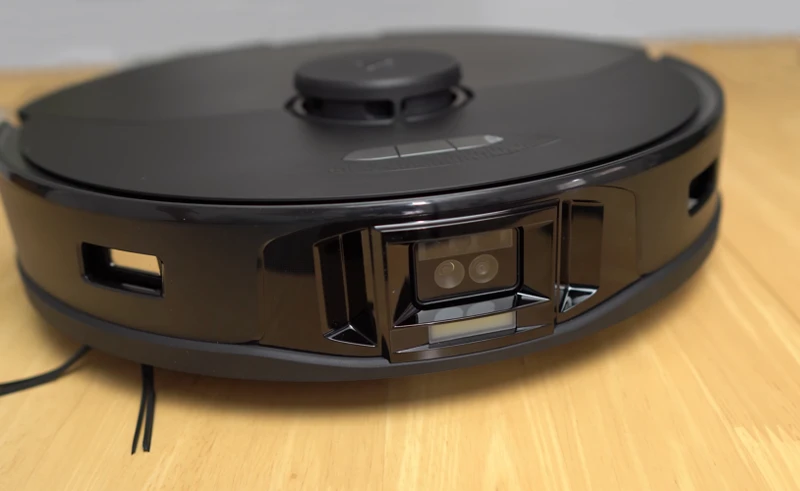
It’s no secret that cleaning the house is a daunting task that many of us would prefer to avoid. Fortunately, advancements in technology have paved the way for efficient and smart cleaning solutions, such as smart vacuum cleaners with advanced navigation systems. These devices are equipped with state-of-the-art technology that allows them to clean your home faster, with less missed spots, and optimized schedules. In this section, we will discuss the efficiency of smart vacuum cleaners in more detail, including how they outperform traditional vacuum cleaners.Smart vacuum navigation tips will also be provided to help ensure the best results for your cleaning needs.
Faster cleaning
Smart vacuum cleaners equipped with advanced navigation systems offer faster cleaning than traditional vacuums. The advanced technology allows the vacuum cleaner to create a map of the area to be cleaned and plan the most efficient cleaning path. This means that the vacuum can clean a room in a fraction of the time it would take to clean manually.
With advanced navigation technology, the robot vacuum cleaner can quickly scan the room and move on to the next area, covering a wider space and minimizing the amount of time spent cleaning each spot. Additionally, these vacuums can clean under furniture and around obstacles without getting stuck or constantly changing direction. This is due to the fact that the smart vacuum cleaners with advanced navigation systems can detect obstacles and plan a cleaning path accordingly.
Compared to traditional vacuum cleaners, which require manual guidance and frequent repositioning, smart vacuum cleaners with advanced navigation systems are a more efficient and time-saving option. The robot vacuum can complete cleaning tasks autonomously, allowing homeowners to focus on other tasks.
To ensure the most efficient cleaning, it’s important to take into consideration some smart vacuum navigation tips. These tips could include clearing the area of obstacles, scheduling cleaning times when nobody is home or the amount of floor traffic is minimized and making sure the vacuum cleaner’s battery is fully charged before each use.
Purchasing a smart vacuum cleaner with advanced navigation systems can revolutionize the way you clean your floors. With faster cleaning times and efficient navigation, this type of vacuum provides a more convenient and effective cleaning experience for homeowners.
Less missed spots
Smart vacuum cleaners with advanced navigation systems excel in ensuring complete cleaning coverage, leaving no area untouched or missed. The traditional vacuum cleaners can easily miss spots, and it can be frustrating to spot missed dirt, debris, or pet hair after a cleaning session. Smart vacuums with navigation can ensure that every inch of your floor is properly cleaned without missing a spot. This is because advanced navigation systems, such as LIDAR, Vision-Based, and Inertial Navigation, create real-time map of your living space to clean the entire area accurately.
With traditional vacuum cleaners, the probability of missing spots is higher, especially if you are cleaning larger areas. You need to move them manually to cover all areas, which can be inconvenient and time-consuming. Unlike traditional vacuums, smart vacuums with advanced navigation have a systematic cleaning approach that navigates through your home, room by room, ensuring that every corner and crevice is covered. Some devices come with multi-room mapping, so you can map and clean multiple rooms at once without worrying about coverage.
The advanced sensors, smart mapping systems, and real-time analysis of the surroundings help these devices to find the best routes to clean thoroughly, faster, and more effectively than you could on your own. With more efficient cleaning and less missed spots, you can be sure to get a cleaner home without wasting your valuable time or effort.
So, investing in a smart vacuum cleaner with advanced navigation technology is worth it, especially for individuals who want to ensure complete cleaning coverage with maximum efficiency and convenience. To learn more about the importance of smart vacuum mapping or get some useful tips about smart vacuum navigation, check out our previous articles like “The Importance of Smart Vacuum Mapping” or “Smart Vacuum Navigation Tips”.
Cleaning schedule optimization
Smart vacuum cleaners with advanced navigation systems bring efficiency and convenience to cleaning routines. One of the benefits that make them stand out is the cleaning schedule optimization feature.
With a regular vacuum cleaner, users may often forget to clean their floors or carpets on schedule, which can lead to dust, dirt and even allergens accumulating unchecked. However, with a smart vacuum cleaner, the cleaning schedule can be optimized to fit the user’s preferences and needs, ensuring a constantly clean environment.
This feature works by letting the user select when and how often the vacuum cleaner should clean a certain area. Users can set up different schedules for different days or weeks, enabling them to focus on specific areas on different days. For example, a user may want their vacuum cleaner to clean the kitchen every day, but only clean the bedrooms twice a week. This can be easily achieved with the smart vacuum cleaner’s scheduling feature.
Some advanced navigation systems like LIDAR navigation can remember the map of the house and avoid previously cleaned areas, optimizing the cleaning time and avoiding overcleaning. This feature ensures that no area in the house is missed and that every corner is covered.
Check if your smart vacuum cleaner has cleaning schedule optimization feature, if not, you can read more about smart vacuum navigation issues and choose the best vacuum cleaner that suits your needs.
Here is a table summarizing the benefits of cleaning schedule optimization:
| Advantages of Cleaning Schedule Optimization |
|---|
| Ensures a constantly clean environment |
| Optimizes cleaning time and avoids overcleaning |
| Enables users to focus on specific areas on different days |
| Remembers the map of the house and avoids previously cleaned areas |
Cleaning schedule optimization is a highly beneficial feature provided by smart vacuum cleaners with advanced navigation systems. It optimizes cleaning time, ensures a constantly clean environment, and helps users focus on specific areas on different days.
Convenience
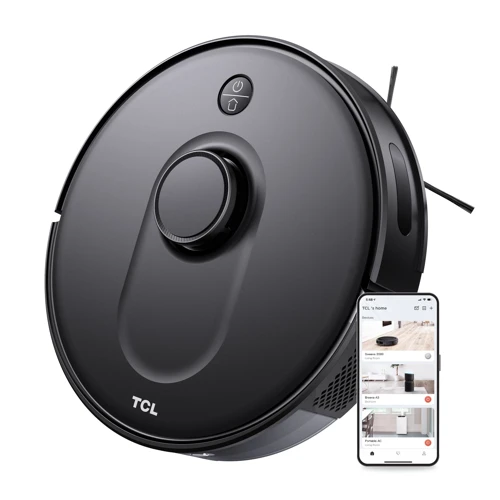
When it comes to cleaning our homes, convenience should be a top priority. After all, nobody wants to spend hours picking up debris and dirt from the floor, especially when there are other important tasks to attend to. Fortunately, smart vacuum cleaners with advanced navigation systems offer the ultimate convenience in home cleaning. With their integrated features, these state-of-the-art cleaning gadgets revolutionize how we approach our cleaning duties. Let’s delve into some of the ways in which these innovative devices make the cleaning process more manageable and effortless. But first, to get a better understanding of the challenges that these smart vacuums seek to address, take a look at our article on “Smart Vacuum Navigation Issues.”
Remote control
Smart vacuum cleaners with advanced navigation have a plethora of benefits that make them stand out compared to their traditional counterparts. One such benefit is the convenience of remote control. With smart vacuum cleaners, you can control the device from a distance through a simple smartphone application.
| No need to be physically present | With remote control, you don’t have to be in the same room as the device to operate it. You can start, pause or stop cleaning sessions from your phone, and even adjust the cleaning settings such as suction power, cleaning mode, and spot cleaning. This feature is especially helpful if you are in a different part of the house or if you are away from home but want to make sure your home stays clean. |
| Convenient for people with disabilities | For those who have mobility issues or disabilities, remote control is a game changer. They can operate the device from a distance without having to get up, move around or bend down. This feature promotes independence and makes cleaning easier for people who may have difficulties doing it manually. |
| Time-saving | Remote control is also a huge time saver. You can schedule cleaning sessions for your smart vacuum cleaner while you are away, and have it clean the house for you without having to be physically present. This feature is ideal for people with busy schedules who want to maintain a clean home without dedicating much time to it. |
Remote control is a convenient feature that adds to the already impressive efficiency and convenience of smart vacuum cleaners with advanced navigation. With remote control, you have more control over your device, and you can keep your home clean without having to physically be there.
Integration with smart home systems
One of the significant benefits of smart vacuum cleaners with advanced navigation systems is their integration capabilities with smart home systems. This integration enables homeowners to control the vacuum cleaner using their smart home devices, further increasing convenience and efficiency.
With the help of voice assistants such as Amazon Alexa and Google Assistant, users can command the vacuum cleaner to start cleaning or stop cleaning without having to physically touch the device. The advantage here is that users can control the device from anywhere in the house, even when doing something else.
Additionally, some smart vacuum cleaners can integrate with smart cameras and sensors installed around the house. This integration allows the vacuum cleaner to navigate around the house more efficiently since it has access to live footage of the house’s layout. For example, if it detects that someone is in a particular room, it will avoid that room when cleaning.
Furthermore, smart vacuum cleaners can integrate with smart lighting systems installed in the house. When it is time to clean the room, the vacuum cleaner can detect if the lights are not bright enough and turn them on to perform optimal cleaning.
The main advantage of integrating the vacuum cleaner with smart home devices is that it creates a seamless and integrated user experience. With everything connected, homeowners no longer need to operate each device manually since everything runs smoothly in the background.
| Integration benefits | Description |
| Voice assistant compatibility | Users can control the vacuum cleaner using voice commands through smart assistants like Amazon Alexa and Google Assistant |
| Camera and sensor integration | The vacuum cleaner can navigate around the house efficiently using smart cameras and sensors installed around the house to know the house layout |
| Lighting integration | The vacuum cleaner can detect the room’s lighting and adjust it accordingly to perform its cleaning functions optimally |
The integration of smart vacuum cleaners with advanced navigation systems with smart home systems creates an incredible user experience. With everything connected, homeowners can control these devices from anywhere in the house, increasing efficiency and convenience.
Navigation Systems
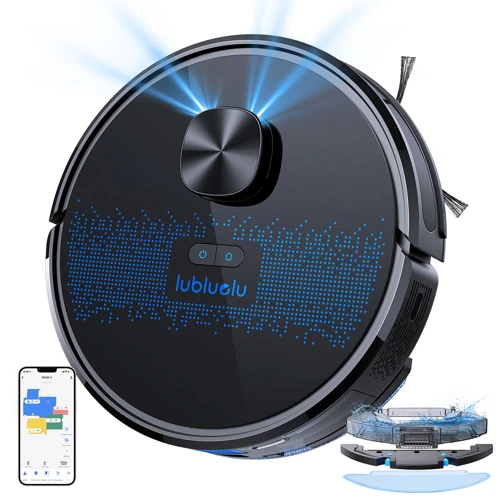
One of the defining characteristics of a smart vacuum cleaner powered by advanced technology is its ability to navigate efficiently and effectively. What sets these devices apart from traditional vacuum cleaners is the myriad of navigation systems that they use to guide their movements. These navigation systems rely on state-of-the-art technologies like LIDAR, Vision-Based Navigation, and Inertial Navigation to enable the vacuum cleaner to move intelligently and with finesse. In this section, we will explore the different navigation systems used in smart vacuum cleaners in detail, and examine their advantages and limitations.
LIDAR Navigation
LIDAR navigation is one of the most advanced navigation systems used in smart vacuum cleaners. LIDAR stands for Light Detection and Ranging. It is a technology that uses lasers to map the environment and create detailed 3D models of the surroundings.
How does LIDAR Navigation work?
LIDAR navigation works by emitting laser beams in different directions and measuring the time it takes for the beam to bounce back to the sensor. The sensor then uses this data to create a 3D map of the environment with precise details of the objects and their distances.
Advantages of LIDAR Navigation
One of the main advantages of LIDAR navigation is its accuracy. The laser beams allow the vacuum cleaner to create detailed maps of the environment, ensuring that it cleans every corner and surface effectively. LIDAR navigation is also efficient, as it allows the vacuum cleaner to move quickly and avoid obstacles without bumping into them.
Disadvantages of LIDAR Navigation
While LIDAR navigation is an excellent system for navigating and mapping the environment, it is also one of the more expensive options for manufacturers. This cost is often reflected in the price of the smart vacuum cleaner. Additionally, LIDAR navigation can struggle in low-light environments as it relies on lasers to map the environment accurately.
Comparison with Other Navigation Systems
When compared to vision-based navigation and inertial navigation, LIDAR navigation is considered the most accurate and efficient. While vision-based navigation is also accurate, it can struggle in low-light conditions or areas with many obstacles. Inertial navigation is the least accurate of the three, as it relies on sensors to measure movement and doesn’t create a detailed map of the environment.
| LIDAR Navigation | Vision-Based Navigation | Inertial Navigation | |
|---|---|---|---|
| Accurate | Accurate | Less accurate | |
| Efficient | Efficient | Less efficient | |
| Expensive | Affordable | Affordable | |
| Works in low-light conditions | Struggles in low-light conditions | N/A | |
| Creates detailed map of environment | Creates map of environment | Does not create a detailed map of environment |
LIDAR navigation is an excellent choice for those looking for a smart vacuum cleaner with advanced navigation technology. While it may be more expensive than other options, its accuracy and efficiency make it a worthwhile investment.
Vision-Based Navigation
Vision-based navigation is another type of navigation system utilized by smart vacuum cleaners. In this system, the device uses an optical sensor to detect the environment and navigate around obstacles. The sensor captures images of the room and uses algorithms to determine the location of different objects in real-time.
One of the major advantages of vision-based navigation is that it allows the vacuum cleaner to navigate through complex and cluttered environments with ease. It is particularly useful in detecting small obstacles and navigating around them without difficulty. Additionally, the device can cover the entire area of the room, minimizing missed spots and improving cleaning efficiency.
However, vision-based navigation systems may not be suitable for all environments. For instance, if the lighting is poor, the optical sensor may not be able to detect objects effectively. If the device is used in a room with many reflective surfaces, it might not detect the objects accurately.
Despite its limitations, vision-based navigation is an advanced technology that makes smart vacuum cleaners more intelligent and efficient. By embracing this technology, manufacturers have developed cleaning devices that can clean a variety of surfaces and navigate through different environments seamlessly.
| Advantages | Limitations |
|---|---|
| Improved navigation around obstacles | Poor performance in low-light environments |
| Covers entire area of the room | Inaccurate detection in rooms with many reflective surfaces |
| Minimizes missed spots and improves cleaning efficiency |
Vision-based navigation is a valuable asset for smart vacuum cleaners. It helps them to clean efficiently and thoroughly, especially in complex and cluttered environments.
Inertial Navigation
Inertial Navigation is a form of navigation used in smart vacuum cleaners. It relies on a combination of accelerometers and gyroscopes to detect movements and changes in direction. This type of navigation system provides accurate mapping of the space a smart vacuum cleaner is cleaning, even in areas with limited sensor data.
The benefits of Inertial Navigation in smart vacuum cleaners include:
| Benefits | Explanation |
| Accurate mapping | Inertial Navigation allows smart vacuum cleaners to map the space they are cleaning with greater accuracy, ensuring more efficient cleaning and fewer missed spots. |
| Real-time adjustments | Smart vacuum cleaners with Inertial Navigation can make real-time adjustments to their cleaning paths, enabling them to respond quickly to changes in the space they are cleaning. |
| Improved battery life | Inertial Navigation systems use less battery power than other navigation systems, improving the overall battery life of smart vacuum cleaners. |
| Higher efficiency | Smart vacuum cleaners equipped with Inertial Navigation can operate more efficiently, reducing the time it takes to clean a space and increasing overall cleaning performance. |
Inertial Navigation represents a significant improvement over traditional navigation systems, which rely on sensors to detect changes in direction and speed. By combining accelerometers and gyroscopes, Inertial Navigation is able to provide highly accurate and reliable mapping data. This makes it ideal for use in smart vacuum cleaners, which require precise mapping in order to operate efficiently and effectively.
Ultimately, the benefits of Inertial Navigation are clear. By improving cleaning efficiency, reducing battery usage, and enabling real-time adjustments, this type of navigation system allows smart vacuum cleaners to clean more thoroughly and quickly. For consumers, that means less time spent cleaning and more time enjoying a clean and tidy home.
Comparison with Traditional Vacuum Cleaners
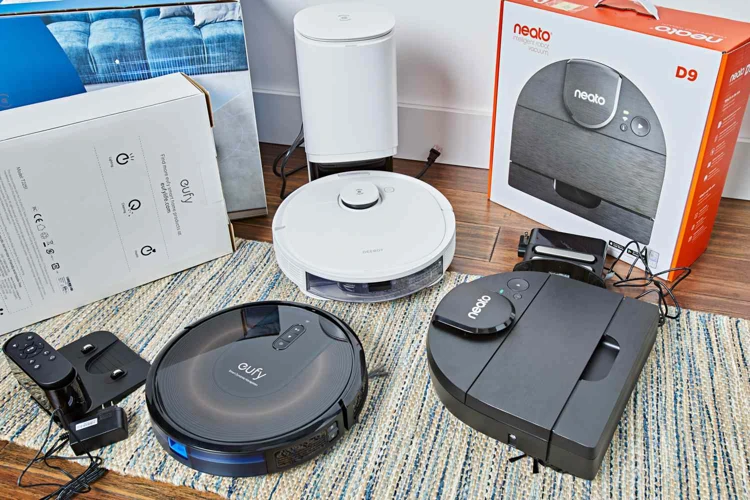
As we dive deeper into the world of smart vacuum cleaners with advanced navigation systems, it’s natural to wonder how they compare to their traditional counterparts. After all, many of us have used a traditional vacuum cleaner at some point in our lives. By comparing the two, we can highlight the advantages of the modern technology and the limitations of the old. Let’s explore some of the key differences between smart vacuums and traditional vacuums.
Limited cleaning efficiency
Traditional vacuum cleaners are often known for their inefficiency in cleaning, especially in hard-to-reach areas. This is because they rely solely on human control and lack the advanced navigation systems that smart vacuum cleaners possess.
In contrast, smart vacuums with advanced navigation systems can clean faster and more thoroughly, leaving no spot untouched. They are specifically designed to minimize human effort while providing exceptional cleaning performance.
Here are some of the limitations of traditional vacuum cleaners when compared to smart vacuums with advanced navigation systems:
- Difficulty in reaching tight spaces: Traditional vacuums are often unable to reach tight corners and narrow spaces, resulting in dirt and dust accumulation over time.
- Inability to detect and avoid obstacles: Traditional vacuums are not equipped with sensors to detect obstacles such as walls or furniture, which can result in collisions and damage to property.
- Inefficient cleaning patterns: Unlike smart vacuums with advanced navigation systems, traditional vacuums can only clean in a random pattern, missing many spots in the process.
- Inconsistent cleaning performance: Traditional vacuums do not have the capacity to adjust their cleaning performance to different floor types or dirt levels, unlike their smarter counterparts.
Traditional vacuums fall short in terms of cleaning efficiency compared to smart vacuums with their advanced navigation systems. Investing in a smart vacuum cleaner with advanced navigation systems can bring significant improvements in cleaning performance and efficiency, making the investment worthwhile in the long run.
No smart features
When it comes to traditional vacuum cleaners, it’s hard to deny their effectiveness in cleaning floors and carpets. However, they lack the smart features that make smart vacuum cleaners with advanced navigation systems so attractive to homeowners. Let’s break down some of the key differences between traditional vacuum cleaners and their smarter counterparts.
| Traditional Vacuum Cleaners | Smart Vacuum Cleaners | |
|---|---|---|
| Efficiency | Often require multiple passes to thoroughly clean a space | Cleans faster and more thoroughly due to advanced navigation systems |
| Convenience | Manual operation and limited control options | Remote control and integration with smart home systems for easy operation |
| Maintenance | Requires constant emptying and cleaning of dust bin and filters | Self-diagnosis and troubleshooting technology to identify and resolve issues |
| Cost-effectiveness | No additional time or cost savings beyond initial purchase | Saves time and money in the long run due to improved efficiency and maintenance |
| Security and Privacy | No features protecting data or privacy | Provides data protection and privacy policies and security features to safeguard personal information |
As the table shows, traditional vacuum cleaners cannot compete with the advanced technology of smart vacuum cleaners. From efficiency to maintenance, smart vacuum cleaners surpass their less intelligent counterparts. While traditional vacuum cleaners may have been the standard for years, it’s clear that the future belongs to smart vacuum cleaners with advanced navigation systems.
Maintenance
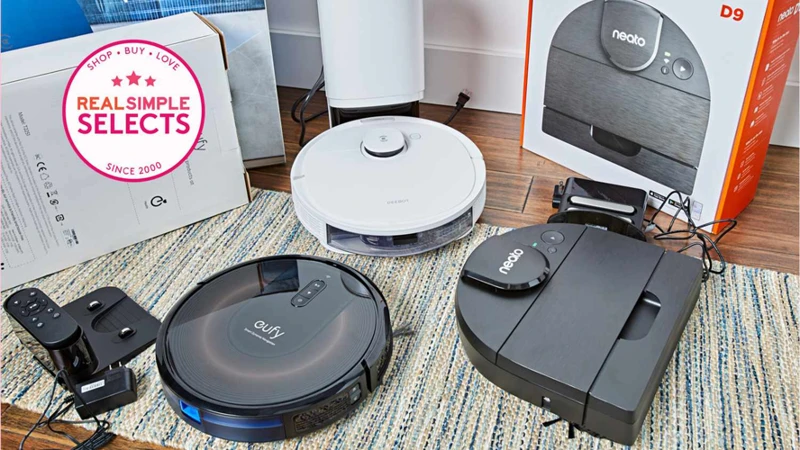
One of the crucial aspects of investing in a smart vacuum cleaner with advanced navigation systems is the maintenance. However, maintaining these high-tech devices is not as complicated as it may seem. In fact, the self-diagnosis and troubleshooting features along with easy maintenance procedures not only reduce the overall maintenance costs but also provide a longer lifespan for the device. Let’s delve into this section to understand how smart vacuum cleaners with advanced navigation systems require minimal effort for maintenance.
Self-diagnosis and troubleshooting
Smart vacuum cleaners with advanced navigation systems have made cleaning easier and more convenient than ever. One of the best advantages of these high-tech appliances is self-diagnosis and troubleshooting, which helps in quick resolution of any issues that may arise during usage.
Benefits of self-diagnosis and troubleshooting feature include:
- Identifying problems quickly: Smart vacuum cleaners have sensors that detect when there’s an issue with the device. The cleaning robot can then diagnose the problem and alert the user immediately. This can be very helpful in avoiding downtime, as the device can be fixed before it becomes a more serious problem.
- Reducing maintenance costs: Since smart vacuums can detect issues early on, it becomes possible to fix them before they become serious. This leads to lower maintenance costs, as any needed repairs are caught early on, reducing the need for more expensive fixes down the line.
- Simple troubleshooting: Many smart vacuum cleaners offer troubleshooting tips that can help users solve common problems on their own. This saves users time and money, as they can troubleshoot and fix the issue without needing to call in a technician.
- Optimizing cleaning efficiency: Smart vacuum cleaners use sensors to navigate around objects and avoid obstacles. When there’s an issue with these sensors, it can impact the device’s cleaning efficiency. By catching and fixing these issues early on, users can ensure that their device is always operating at peak efficiency.
The self-diagnosis and troubleshooting feature is a valuable addition to the advanced navigation systems of smart vacuum cleaners. By identifying issues quickly, reducing maintenance costs, offering simple troubleshooting, and optimizing cleaning efficiency, users can enjoy the full benefits of their device with minimal hassle.
Easy maintenance procedures
Keeping a smart vacuum cleaner with advanced navigation in optimal working condition is critical to ensure it performs at its best. Fortunately, maintenance of these cutting-edge cleaning appliances is straightforward with a few easy procedures. Here are some tips to keep your smart vacuum cleaner running smoothly:
- Clean the dustbin regularly: Dust, dirt, and debris accumulate in the dustbin over time, which may affect the vacuum cleaner’s suction power. Regularly emptying and cleaning the dustbin ensures it remains ready for the next cleaning task. Most smart vacuum cleaners come with dustbin full alerts to help you know when it’s time to empty the dustbin.
- Replace filters: Filters play a vital role in trapping tiny airborne particles, preventing them from recirculating in your home. Over time, filters may get clogged, reducing their effectiveness. Check the manufacturer’s instructions for the type of filter used and how often it requires replacement.
- Clean the brushes: Brushes collect dust, pet hair, and other debris, which affects their performance. Regularly check the brushes for tangles and remove any hair or debris. Some models come with self-cleaning brushes, which reduce the need for manual cleaning.
- Inspect the wheels and sensors: Wheels and sensors allow the vacuum cleaner to move around your home seamlessly. Check them regularly for signs of wear and tear, and clean them if necessary.
- Update the firmware: Smart vacuum cleaners may require regular firmware updates to improve their performance and fix any bugs. Check the manufacturer’s website or mobile app for firmware updates and follow the instructions to update your device.
Following these easy maintenance procedures will not only extend the lifespan of your smart vacuum cleaner but also ensure it operates at maximum efficiency. With regular cleaning and maintenance, your smart vacuum cleaner will continue to keep your home cleaner and healthier for years to come.
Longer lifespan
Smart vacuum cleaners with advanced navigation systems have a longer lifespan compared to traditional vacuum cleaners. This is due to the high-quality components and advanced technology used in their design.
One reason for their longer lifespan is the use of durable brushes and filters that can withstand heavy use. The brushes are designed to be self-cleaning, which reduces the wear and tear on the bristles and ensures optimal cleaning performance. Additionally, the filters are designed to trap finer particles, extending their lifespan by preventing clogs and reducing the need for frequent replacements.
Another contributing factor to the longer lifespan of smart vacuum cleaners with advanced navigation systems is their ability to detect and avoid obstacles. This prevents collisions and damages that can affect the overall performance and longevity of the vacuum. The advanced navigation systems help to identify the most efficient cleaning path, reducing the amount of time and energy that the vacuum operates, thereby increasing its lifespan.
To summarize, smart vacuum cleaners with advanced navigation systems have a longer lifespan due to their durable components, self-cleaning brushes and filters, obstacle detection, and efficient cleaning path. By investing in such advanced technology, you can save money in the long run, as you won’t need to replace your vacuum cleaner as frequently. Below is a table highlighting some of the features that contribute to the longer lifespan of smart vacuum cleaners:
| Features | Benefits |
| Durable brushes and filters | Reduced wear and tear, optimal cleaning performance |
| Self-cleaning brushes | Minimized bristle damage |
| Effective filters | Traps finer particles, preventing clogs and reducing need for frequent replacements |
| Obstacle detection | Prevents collisions and damages to the vacuum |
| Efficient cleaning path | Reduces time and energy used, increasing lifespan |
Cost-effectiveness
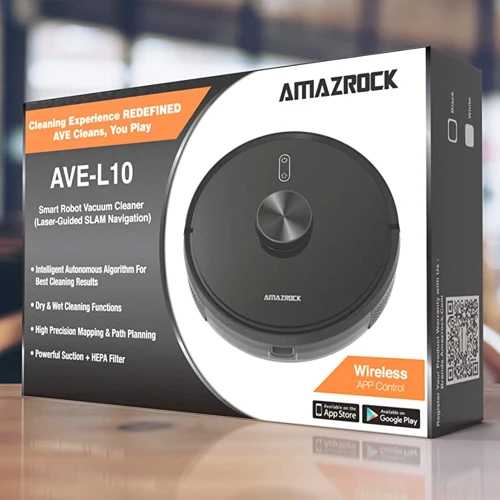
When it comes to purchasing a vacuum cleaner, cost-effectiveness is an important consideration. Wouldn’t it be great if a vacuum cleaner could not only clean your house efficiently but also save you money in the long run? Smart vacuum cleaners that come with advanced navigation systems are designed to do just that. With their ability to optimize cleaning schedules and save energy, investing in a smart vacuum cleaner can provide both time-saving and long-term cost-saving benefits. Let’s take a look at these benefits in more detail.
Time-saving benefits
One of the major advantages of smart vacuum cleaners with advanced navigation systems is the amount of time they can save for users. By using technology to streamline the cleaning process, these smart vacuums can offer faster and more efficient cleaning with less effort required on the part of the user.
Let’s take a look at some of the specific ways in which these devices can save time:
| Benefits | Description |
|---|---|
| Automated cleaning | With their pre-programmed cleaning schedules, smart vacuums can clean automatically without the need for user input or supervision. This means you can focus on other tasks or simply relax while the device takes care of the cleaning. |
| Faster cleaning | Thanks to their advanced navigation systems, these vacuums can move more quickly and efficiently around your home, covering more ground in less time than traditional vacuums. This can be especially beneficial for larger homes, where cleaning can be a time-consuming task. |
| Scheduling flexibility | Many smart vacuums allow you to set a customized cleaning schedule, so you can choose exactly when and how often the device cleans. This means you can fit cleaning around your busy schedule, rather than having to adjust your schedule to accommodate cleaning. |
| Multi-tasking | By delegating the cleaning to a smart vacuum, you can free up time to work on other tasks, such as cooking, working, or spending time with family. This can help you be more productive and efficient overall. |
The time-saving benefits of smart vacuums with advanced navigation systems can be significant, and can help users achieve a better work-life balance while still keeping their homes clean and tidy.
Long-term savings
When it comes to smart vacuum cleaners with advanced navigation systems, long-term savings are a significant advantage. Sure, they may have a higher upfront cost compared to traditional vacuum cleaners, but the savings in the long run make it a worthwhile investment.
Here are some of the ways in which smart vacuums can save you money in the long term:
| Savings | Description |
|---|---|
| Efficiency | Smart vacuums have advanced cleaning mechanisms and navigation systems that enable them to clean your home faster, more effectively and with less missed spots than traditional vacuums. This means they use less energy and waste far less time than traditional vacuums. By reducing the amount of time you need to spend cleaning, you can save on energy and labor costs in the long run. |
| Maintenance | Smart vacuums have self-diagnosis and troubleshooting features, which means that they can identify and resolve any issues before they escalate into larger problems. The maintenance procedures are relatively easy and require little upkeep, which translates to lower maintenance and repair costs throughout the product’s life. |
| Longer Lifespan | Smart vacuums are built with high-quality materials and advanced technology, which makes them last longer than traditional vacuums. Their powerful motors, improved filtration systems, and better plastic materials help them withstand wear and tear over time. As a result, smart vacuums have a longer lifespan than traditional vacuums, reducing the need for frequent replacements. |
| Time-saving benefits | Smart vacuums have features like remote control, scheduling, and smart home integration, which allow you to clean on-the-go and automate the cleaning process. This saves time, and also reduces the need for manual intervention, thereby saving costs in the long run. |
Investing in a smart vacuum cleaner with advanced navigation systems may seem expensive initially, but the long-term savings in terms of energy, labor, and maintenance costs make it a cost-effective and practical investment.
Environmental Impact
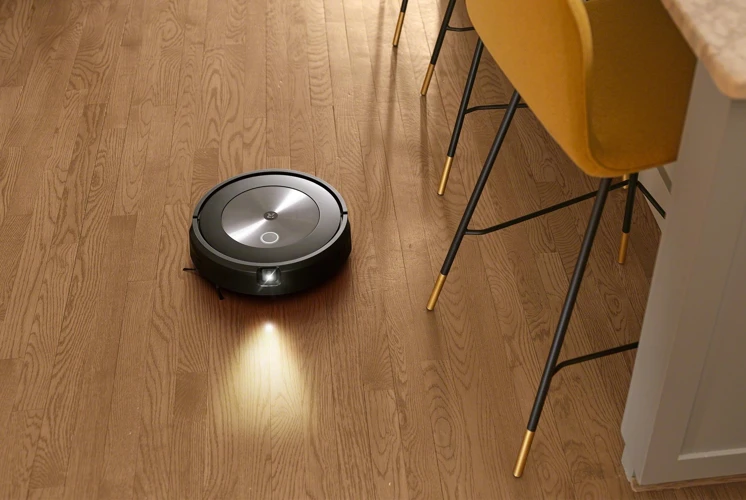
As concern for the environment grows, consumers are increasingly looking for ways to minimize their impact. In the realm of household appliances, smart vacuum cleaners with advanced navigation systems are the new sustainable solution. These devices offer a range of benefits that not only make cleaning more efficient and convenient, but also contribute to a healthier planet. Let’s take a closer look at some of the key environmental advantages of smart vacuum cleaners.
Less energy consumption
Smart vacuum cleaners with advanced navigation systems have a significant advantage over traditional vacuum cleaners in terms of energy consumption. By utilizing advanced technology, these devices can navigate through your home in a more efficient manner, reducing the amount of energy usage, and ultimately helping you save money on your monthly energy bills.
Here are some ways that smart vacuum cleaners with advanced navigation systems can help you save energy:
- Mapping technology: One of the biggest energy-saving benefits of these vacuums is their ability to map out your home’s layout. This allows them to create a more efficient cleaning path that prevents unnecessary backtracking or covering the same area twice. As a result, they consume less energy overall, which can help keep your energy bills low.
- Sensor technology: Smart vacuum cleaners use sensor technology to detect obstacles and avoid them. By doing so, they don’t waste energy bumping into walls or furniture, as traditional vacuum cleaners often do. This means that smart vacuums use less energy to clean the same area, and they’re less likely to cause damage to your furniture or walls.
- Adjusting suction power: Some smart vacuums have the ability to automatically adjust their suction power based on the type of surface they’re cleaning. This means that they use only the amount of power they need to get the job done, minimizing the amount of energy they use overall.
Not only does reducing energy consumption help you save money on your monthly bills, but it’s also better for the environment. By investing in a smart vacuum with advanced navigation technology, you can reduce your carbon footprint and contribute to a more sustainable future.
Filtering technology
Smart vacuum cleaners with advanced navigation systems not only provide efficient and convenient cleaning, but also have advanced filtering technology that sets them apart from traditional vacuum cleaners. This technology ensures that not only is your floor free from dirt and debris, but also the air is filtered of dust and allergens.
One type of filtering technology is HEPA (High Efficiency Particulate Air) filter which can capture 99% of particles as small as 0.3 microns. This means that it can effectively capture pet dander, pollen, and dust mites that traditional vacuum cleaners might miss. Having a HEPA filter in your smart vacuum cleaner is especially beneficial for people who suffer from allergies or asthma.
Additionally, some smart vacuum cleaners have ultraviolet (UV) light technology incorporated into their filtering system. UV light is effective at killing viruses and bacteria, making it an excellent way to ensure clean and hygienic air in your home.
Another advanced filtering technology is the activated carbon filter which is effective at capturing odors such as pet smells, cigarette smoke, and cooking odors. This filter works by absorbing the odor molecules and trapping them in the filter, unlike traditional vacuum cleaners that just push odors around.
Lastly, some smart vacuum cleaners have self-cleaning filters that use their suction power to clean the filter automatically, ensuring maximum efficiency at all times.
The filtering technology incorporated into smart vacuum cleaners with advanced navigation systems makes them a wise investment for anyone looking to keep their floors and air clean, especially for those with allergies or respiratory problems.
Noise reduction
One of the benefits of smart vacuum cleaners with advanced navigation systems is the noise reduction feature. Traditional vacuum cleaners can be quite noisy and disrupt the peace and quiet of a home or workspace. With smart vacuums, noise is minimized through various design features.
Design Features
Smart vacuums with advanced navigation systems use design features like larger wheels and improved brush roll technology that reduces vibrations and friction. They also use advanced motor technology that is optimized for quieter operation. This means that users can clean their space without disturbing others in the area.
| Features | Description |
|---|---|
| Larger wheels | Reduces vibrations and possible noise created by a vacuum cleaner |
| Improved brush roll technology | Reduces friction, which also means reduced vibrations and noise |
| Advanced motor technology | Quieter operation optimized for cleaning performance |
In addition to these design features, smart vacuums with advanced navigation systems also use software features that minimize noise. These include optimized cleaning paths that avoid noisy areas and noise-dampening technology that reduces noise levels without affecting cleaning performance.
Software Features
Smart vacuums with advanced navigation systems use software features like optimized cleaning paths that avoid noisy areas and noise-dampening technology that reduce noise levels without affecting cleaning performance. These technologies work in tandem with the design features of smart vacuums to create a quieter, more efficient vacuuming experience.
| Features | Description |
|---|---|
| Optimized cleaning paths | Avoids noisy areas during cleaning |
| Noise-dampening technology | Reduces noise levels without affecting cleaning performance |
Smart vacuums with advanced navigation systems make vacuuming quieter and more enjoyable, allowing for a more pleasant home or workspace. With a variety of design and software features, these vacuums offer several benefits beyond traditional vacuums, making them a great investment for any home or office.
Security and Privacy
As we integrate more smart technology into our homes, concerns about security and privacy become increasingly important. Smart vacuum cleaners with advanced navigation systems are no exception. While the convenience and efficiency they provide are undeniable, it’s important to ensure that your personal data stays safe and secure. In this section, we’ll explore the security and privacy features of these devices and what you can do to protect yourself.
Data protection and privacy policy
Smart vacuum cleaners with advanced navigation systems are equipped with multiple sensors and cameras, which raises concerns about data privacy and security. Users need to have complete trust in the manufacturers that their personal data is secure and not being misused. Manufacturers must have a clear data protection and privacy policy that should be openly displayed and easily accessible to the users.
Data Protection Policy
The data protection policy should outline how the company collects, stores, and uses the data collected by the smart vacuum cleaner. This data includes the user’s preferences, cleaning schedules, and information about their living space. The policy should ensure that the user’s personal data will only be used for the purpose it was collected and will not be shared with any third-party organizations without the user’s explicit consent.
Privacy Policy
The privacy policy should detail how the company securely stores the user’s data and information. It should include the type of encryption algorithms used to protect the data and how the data is stored on the company’s servers. The policy should also detail the extent to which the customer’s data is exposed to the company’s employees and how the company ensures that only the necessary employees have access to the data.
Transparency
The privacy policy should also provide complete transparency about how the data collected is being used by the company. Users should have the option to control and edit their data at any time. The company should provide a user-friendly interface that allows users to easily view and manage their data.
Non-disclosure agreement
Before the user purchases the smart vacuum cleaner, the manufacturer should have the user sign a non-disclosure agreement (NDA), which reinforces the company’s commitment to protecting the user’s privacy. The NDA ensures that the user will not disclose the company’s trade secrets, technology, or any other confidential information provided by the company.
Smart vacuum cleaners with advanced navigation systems provide many benefits, but users must be confident that their personal data is secure. A clear data protection and privacy policy that outlines how the user’s data will be used and managed is essential for users to trust and purchase these modern devices.
Security features
Smart vacuum cleaners with advanced navigation systems offer a range of features that make them secure and reliable in the household. Here are some of the top security features of these devices:
- Encryption: The communication between the vacuum cleaner and the connected devices in your home is encrypted to prevent any unauthorized access or hacking attempts. This ensures that all the data exchanged between the devices is secure and private.
- Authentication: Smart vacuum cleaners require permission from the user before they can be connected to other devices or networks, which helps to prevent any unauthorized access or tampering. Authentication also provides an added layer of security to ensure that only authorized users have access to the device.
- Password Protection: Most smart vacuum cleaners with advanced navigation systems include password protection to prevent any unauthorized access. This means that only the owner or authorized user can access the device or make changes to its settings.
- Auto-shutdown: In the event that the device detects any unauthorized activity, it will immediately shut down to prevent any further damage or malicious activity. This feature ensures that the device is protected even when the owner is away from home.
- Data Protection: Smart vacuum cleaners are designed to protect user data and information to prevent any unauthorized access or data breaches. They use advanced security measures to encrypt and protect all user data, including cleaning schedules, device preferences, and user profiles.
- Third-Party App Restrictions: To prevent any security breaches caused by third-party apps, most smart vacuum cleaners come with restrictions on the types of apps they can be connected to. This minimizes the risk of unauthorized access and malicious activity.
Smart vacuum cleaners with advanced navigation systems offer a range of security features that help to protect user data and ensure the device is secure against any unauthorized access or malicious activity. With these features, homeowners can rest assured that their smart vacuum cleaner is a reliable and secure addition to their home.
Conclusion
In conclusion, investing in a smart vacuum cleaner with advanced navigation systems can bring numerous benefits to your household. The efficiency of cleaning is notably improved, thanks to the faster cleaning process, fewer missed spots, and the cleaning schedule optimization. Moreover, the convenience of being able to control the device remotely or integrating it with smart home systems is a game changer.
The navigation systems found in smart vacuum cleaners are more sophisticated than traditional vacuum cleaners. They facilitate LIDAR navigation, vision-based navigation, and inertial navigation, which allow for precise movements and the ability to map a cleaning path.
Compared to traditional vacuum cleaners, smart vacuum cleaners with advanced navigation provide superior cleaning performance due to their smart features, including smart scheduling, remote control, and even mapping abilities, rendering traditional vacuums to be outdated.
Additionally, these advanced vacuum cleaners are easier to maintain with self-diagnosis and troubleshooting abilities that promote longevity, saving time and money in the long run. They are also cost-effective, offering long-term savings due to their improved cleaning efficiency, and are environmentally friendly with less energy consumption and noise pollution.
When purchasing a smart vacuum cleaner, it is essential to consider the security and privacy features it offers, including data protection and privacy policies, to ensure that your household’s personal information remains secure.
In essence, a smart vacuum cleaner with advanced navigational features will bring you not only convenience and ease but also efficient cleaning performance and cost savings. Upgrading to a smart vacuum cleaner is a strategic investment that any homeowner can make.
Frequently Asked Questions
1. How does a smart vacuum cleaner navigate around a room?
Smart vacuum cleaners use advanced navigation systems such as LIDAR, vision-based and inertial navigation to map and navigate a room. These systems allow the vacuum cleaner to detect and avoid obstacles, map the room and clean the floors more efficiently.
2. Can a smart vacuum cleaner be controlled remotely?
Yes, most smart vacuum cleaners can be controlled remotely using a smartphone app. This feature allows you to start or stop the vacuum cleaner, schedule cleaning tasks, and even monitor the cleaning process from a distance.
3. Are smart vacuum cleaners more expensive than traditional vacuum cleaners?
Yes, smart vacuum cleaners with advanced navigation systems and smart features are usually more expensive than traditional vacuum cleaners. However, they offer more benefits such as time-saving, long-term savings, and better cleaning efficiency.
4. What is the average lifespan of a smart vacuum cleaner?
The average lifespan of a smart vacuum cleaner depends on the brand and model. However, most smart vacuum cleaners have a lifespan of 3-5 years, depending on usage and maintenance.
5. Do smart vacuum cleaners consume less energy than traditional vacuum cleaners?
Yes, smart vacuum cleaners consume less energy than traditional vacuum cleaners. They are designed to use less power, thanks to their advanced navigation systems that allow them to clean more efficiently and avoid wasting energy in areas that have already been cleaned.
6. Can smart vacuum cleaners detect and clean carpets and rugs?
Yes, most smart vacuum cleaners are designed to clean carpets and rugs. They use sensors and advanced navigation systems to detect the type of flooring and adjust their cleaning mode automatically for optimum performance.
7. Are smart vacuum cleaners noisy?
No, smart vacuum cleaners are usually quieter than traditional vacuum cleaners. They are designed to produce less noise thanks to their advanced filters, noise reduction technology, and improved motor efficiency.
8. Do smart vacuum cleaners require frequent maintenance?
No, smart vacuum cleaners require less maintenance than traditional vacuum cleaners. They have self-diagnosis and troubleshooting features that allow them to detect and fix problems automatically, and their maintenance procedures are usually very easy and straightforward.
9. Are smart vacuum cleaners environmentally friendly?
Yes, smart vacuum cleaners are environmentally friendly. They consume less energy, produce less noise, and have advanced filtering technology that captures dust and other harmful particles, improving indoor air quality.
10. Can smart vacuum cleaners be used on multiple floors?
Yes, most smart vacuum cleaners can be used on multiple floors. They have sensors and navigation systems that allow them to adjust to different flooring types and surfaces, including carpets, rugs, hardwood, and tiles.
